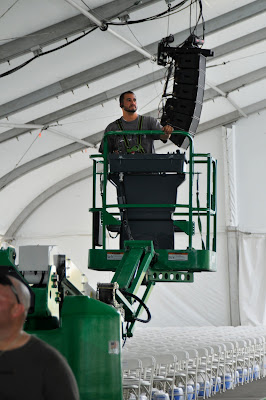



Shepherd of the Hills put on an absolutely amazing Easter service today, but the credit all goes to JESUS! It's something that really touches your heart when you see how God shows up in the lives of ordinary people, and in His name, something extraordinary happens. Two services, 8500 seats, 900 volunteers, and a whole lot of lives changed by the experience.
The pictures you see above are all part of a behind the scenes look at the whole production. The dancers and choir in their jeans and shorts doing their final sound checks on Saturday before Easter, the director and the technical director working a live edit in the video production truck, the band's percussion section, and the riggers are all part of the hard work that leads up to the event.
This article is more than a story about all the behind the scenes work that went into Easter services at Shepherd of the Hills church. The one thing I can tell anyone interested in building their artistic talents is GET INVOLVED! The experience you will gain will stay with you for a lifetime. At a megachurch, think of all the resources of talent you will find. Our video production crew is mostly made up of working professionals. The same thing is true for the praise team singers, the sound people, the riggers, the emergency response teams, and many other positions. Sure, we all have our businesses to run, but there's more to life than your day job. Of course, by becoming involved you'll meet people who can help you take your artistic talents to a higher level. Of course, you'll be able to do amazing things you never would have thought possible. There are so many secular reasons to become involved with a group of people like this for purely self-motivated reasons. Drop in any time! I'm usually on camera for the Saturday evening service. So come by and stay for the praise and worship singing even if you're not really into the whole Jesus thing. God is looking for worshippers, but if you want to just come and hang around and listen to some really talented singers, feel free to come enjoy a first rate gospel music experience.
And oh yea, that Jesus guy, he just might show up in your life too....








